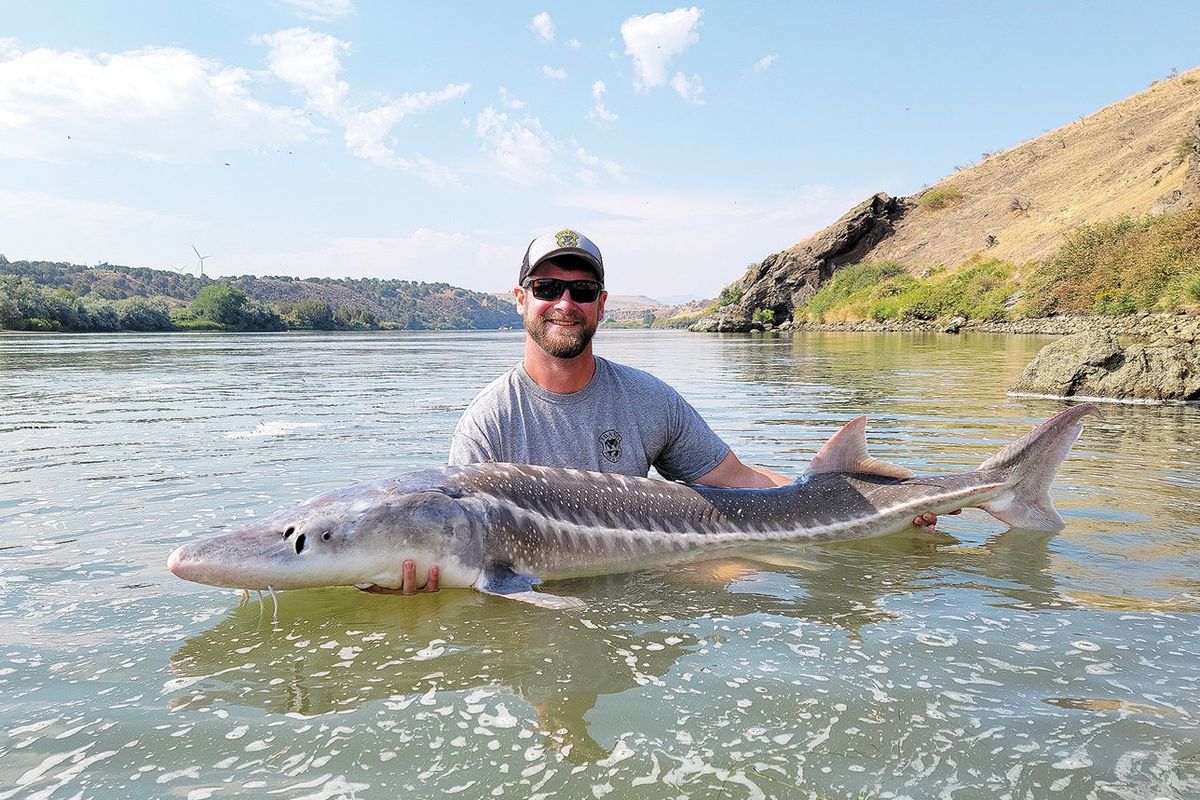Lake Roosevelt white sturgeon fishing rules to change

Washington fishery managers plan to change the Lake Roosevelt sturgeon fishery to a fall fishery in 2023, a move designed to protect wild adult sturgeon.
“We’re hooking large sturgeon … during the summer,” Washington Department of Fish and Wildlife’s Chris Donley said. “Which has the potential of increasing hooking mortality.”
The cooler fall temperatures reduce overall stress on the fish and, by extension, mortality due to catch-and-release fishing. WDFW has two meetings scheduled to discuss the change with anglers (see sidebar).
Since 2018, the Lake Roosevelt sturgeon fishery has opened in mid-June and closed at the end of September, according to an agency news release. That sport fishery had a specific conservation goal: reducing the number of hatchery-reared fish.
That’s because starting in 2006 state and tribal managers began releasing hatchery-reared fish into Lake Roosevelt in an effort to counteract a steadily declining wild population. The decline remains somewhat mysterious, with wild adult sturgeon producing eggs and larva regularly. During the larval stage, however, there is high, and not fully explained, mortality.
All the same, that initial wave of hatchery fish was captured adults who were then bred in captivity. Those year classes, however, had higher rates of survival than managers anticipated, Donley said. The problem? This type of hatchery collection can lead to a lack of genetic diversity.
“Because of their limited genetics, we realized that as these fish age toward maturity they represented a genetic risk to the wild population, something we refer to as genetic swamping,” said Bill Baker, the WDFW’s Region 1 fish biologist in a video recording.
Between 2017 and 2022, anglers targeted these hatchery-reared fish, killing between 4,000 and 5,000 , which was the hoped for conservation outcome. Meanwhile, WDFW and tribal fishery managers have started releasing a different type of hatchery-raised fish. Instead of catching adult fish, biologists gather wild larva and raise them in a hatchery. This provides more genetic diversity and better mimics nature.
“The risk of genetic swamping was avoided,” Baker said. “So kudos to our angling base, which solved what could have been a major problem.”
Part of the reason why it might have been a major problem is because of white sturgeon’s remarkable life cycle. The ancient fish can grow to more than 10 feet long and weight hundreds of pounds, according to WDFW. They also live a long time, sometimes more than 100 years old.
All of which means they don’t reach sexual maturity until 15-20 years, making conservative management of them vital. Unlike faster breeding species, a management mistake can’t be easily fixed in one or two life cycles.
“We’re hooking large sturgeon during warm periods of the year during the summer,” he said. “Which has the potential of increasing hooking mortality.”
This year’s new rules reflect that concern and going forward anglers will see reduced recreational sturgeon opportunities, Baker said. At the current rate of mortality, Baker estimates there would be fewer than 500 wild sturgeon left by 2027. While there will still be some harvest permitted in 2023, there will be a period of catch-and-release only, with the hope of reinstituting the harvest when the 2017 class is large enough, which should be around 2030 (see sidebar).